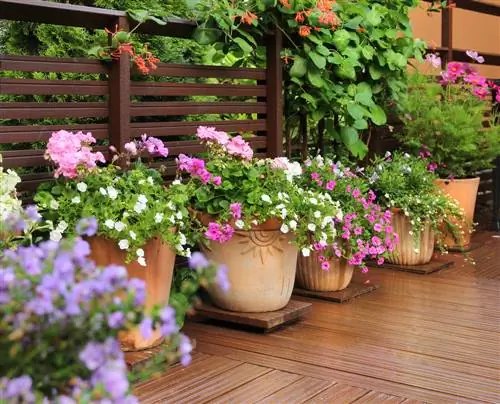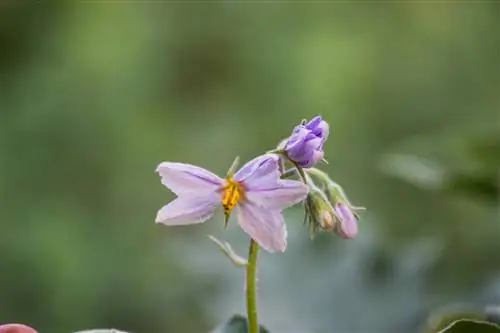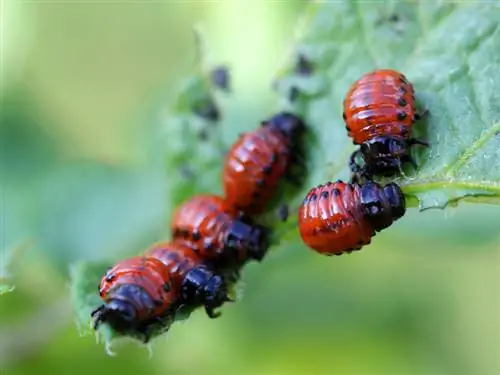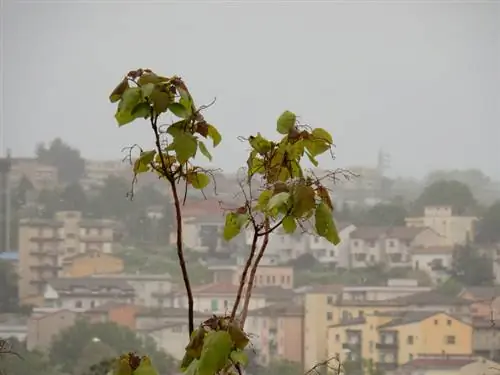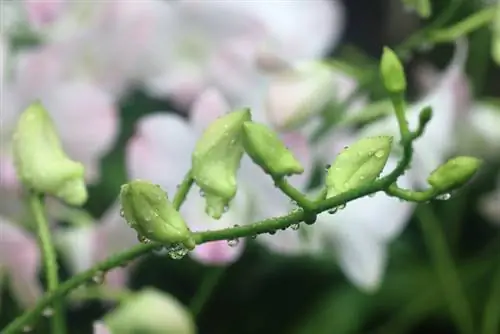- Author admin [email protected].
- Public 2023-12-25 17:45.
- Last modified 2025-01-23 11:22.
Whether with or without plants, you should always pay attention to the stability of your plant pots. On materials that break quickly, such as terracotta or glass, a repair does not remain invisible. Purchasing a new plant pot is associated with high costs, especially with this material. Therefore, prevention is the best measure. Find out in this guide how to protect your plant pot from falling over.
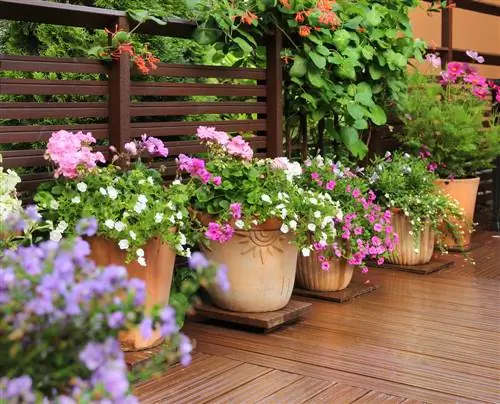
How can you effectively secure a plant pot from falling over?
To prevent a planter from falling over, place it in a wind-protected location, use heavy material such as soil, stones or gravel as filler, place the pot on a plant roller and group several planters together, to create additional wind protection.
Which plant pots you should secure from falling over
If your planter is on a house wall, it is not particularly at risk of falling over due to its wind-protected location. However, large pots look better, especially in the middle of the garden, for example in a small island bed. However, there it is completely at the mercy of strong winds. You should therefore protect free-standing containers from falling over using the measures listed below. This is less necessary for shallow containers than for tall containers. Even large plants are often caught in the wind and knock over the pot. In general, secure stability is only guaranteed if the size ratio between the pot and the plant is correct.
Measures
It's best to layer heavy material at the bottom of your planter. Recommended are:
- Earth
- Stones
- gravel
However, these precautionary measures have the disadvantage that the pot is less mobile during wintering. To eliminate this problem, place your planter on a plant roller before securing it.
Location
- The location of your planter should be framed on three sides.
- Group several planters that protect each other from the wind.
- Adjusting the shape of the pot to the growth of the plant prevents the leverage effect.
- Provide wind protection with a small wall, for example made of willow.
- You can also use tall shrubs as natural windbreaks (for example bamboo, viburnum, the evergreen olive willow or a maple tree).
Not recommended measures
A method that may not seem helpful at first but is still ineffective is tying the plant down. This damages both the plant and the plant pot.

